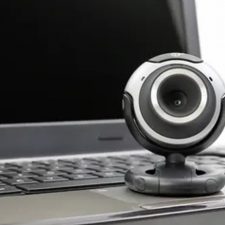One of the most important things you can do is work out what your viewers want. If they are looking at a screen, then make sure it’s big enough for them to see everything that is happening around you and not just sitting in front of their computer. This will give people an idea if they should come closer or move away from the camera. The size of the webcams vary greatly so take into account how much space there actually is when filming – maybe even get some advice before buying one!
If you’re using Skype as a platform, ensure all your contacts have the latest version installed otherwise you won’t be able to use the ‘webcam’ function which allows you to appear live over the internet. You’ll also need a microphone but this isn’t essential although recommended since it makes audio sound more natural (and less muffled). When setting up your broadcast, consider whether you really need video capture functionality? Or if you could instead rely upon text chat with your contacts only? It might save you money too!
Don’t forget to set up any other equipment like lighting etc. Make sure that everything works together so that you don’t find yourself trying to turn off the lights because the flash has gone crazy whilst someone else is having trouble hearing themselves speak because the mic was turned down. Ensure everyone knows where the emergency exits are in case of fire/emergency. Check the time zone difference between you and your audience members too so that no-one gets confused by seeing something different than expected. Also check out the local laws about broadcasting online and whether you need special permission to film.
When recording yourself, try to keep still whenever possible. Don’t walk around or lean against anything unless necessary. Use a tripod or similar if needed. Never point the camera directly at anyone without asking first, especially children who may feel scared or embarrassed. Keep a safe distance back and never look through the lens. A lot of these tips apply to regular cameras too.
The best way to position yourself is to think about the area behind you. What background would complement your image? Then decide exactly where the camera needs to go and fix it firmly in place. Ideally you shouldn’t require tape or screws to secure it though you might if you intend doing more complex stuff later.
Once you’ve got the basics sorted, you can start thinking about editing the footage. Some software packages such as iMovie allow users to drag clips onto each others ends to create montages. Some of these tools let you trim videos, add music, voiceovers and captions, rotate images, change colors and effects, convert files and burn DVDs. To learn more about video editing techniques click here.
Not alone?
A simple trick is to put screensavers on computers used in meetings and classrooms so that kids watching remotely know that the meeting hasn’t ended yet! Another tip is to stick a note saying ‘please leave now!’ on the monitor so those who aren’t paying attention realize that the teacher wants them to stop staring at the screen and behave.
You can always record over old footage by simply hitting delete once you’ve finished. However, if you need to edit a clip then you must import it into another application for editing purposes. There are plenty of free programs available which offer basic editing facilities including the ability to cut and paste segments, adjust color levels and crop frames. Click here for our recommendations.
Appearance
Another thing worth remembering is to wear clothes that suit your personality. For example, I’m quite shy so my wardrobe tends towards loose fitting tops and skirts whereas my mother prefers smart business suits. The same goes for hair styles – wearing lots of makeup doesn’t mean you necessarily have to dress up. People often get carried away with making an effort, particularly in front of the camera. Think about the message you wish to convey rather than what you’d normally choose to wear and base your choice accordingly.
Finally!
Finally remember to breathe… we all tend to tense up when talking in public and holding a breath causes us to become short of air. Try breathing slowly and steadily through your nose and watch as your shoulders relax and your face becomes animated. Remembering to breathe helps calm you down and gives you confidence.
